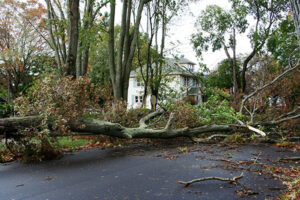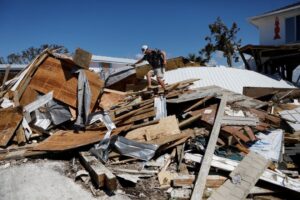Understanding the Importance of Quick Hurricane Damage Cleanup
Posted by Xavier Lentoose in Business on Apr 4th, 2025 | Comments Off on Understanding the Importance of Quick Hurricane Damage CleanupHurricanes are among the most destructive natural disasters, leaving behind extensive damage that can take months, or even years, to fully repair. The aftermath of a hurricane can be overwhelming, with flooding, structural damage, and debris covering vast areas. Quick cleanup efforts are crucial to restoring normalcy and preventing further complications. Understanding the importance of timely hurricane damage cleanup can help homeowners, businesses, and communities recover faster and more effectively.
The Immediate Aftermath of a Hurricane
 Once a hurricane has passed, the devastation it leaves behind can be significant. Streets may be flooded, trees may be uprooted, and homes may suffer from broken windows, roof collapses, or water intrusion. In many cases, power outages make it difficult to assess the full extent of the damage. The first step in recovery is assessing the safety of the affected area. Emergency responders and local authorities work quickly to clear major roadways, restore electricity, and provide immediate assistance to those in need. However, individual property owners must also act swiftly to begin the cleanup process and minimize further damage.
Once a hurricane has passed, the devastation it leaves behind can be significant. Streets may be flooded, trees may be uprooted, and homes may suffer from broken windows, roof collapses, or water intrusion. In many cases, power outages make it difficult to assess the full extent of the damage. The first step in recovery is assessing the safety of the affected area. Emergency responders and local authorities work quickly to clear major roadways, restore electricity, and provide immediate assistance to those in need. However, individual property owners must also act swiftly to begin the cleanup process and minimize further damage.
Preventing Long-Term Structural Damage
One of the biggest concerns following a hurricane is the structural integrity of buildings. Wind and water can weaken foundations, roofs, and walls, making structures unsafe. The longer debris, standing water, and moisture are left unaddressed, the greater the risk of permanent damage. Wood can rot, metal can rust, and mold can begin to spread within just a few days. Quick cleanup helps to mitigate these risks by removing water, repairing structural damage, and ensuring that homes and businesses remain habitable.
Addressing Health and Safety Concerns
Floodwaters left behind by a hurricane often carry contaminants, including sewage, chemicals, and bacteria. Exposure to these pollutants can pose serious health risks, including respiratory infections, skin irritation, and waterborne diseases. Mold growth is another major concern, as it can spread rapidly in damp environments and cause allergic reactions or respiratory issues. Cleaning up as soon as possible reduces these risks by eliminating contaminated water, sanitizing surfaces, and improving air quality.
Debris from fallen trees, broken glass, and damaged buildings also creates hazardous conditions. Clearing away these materials not only makes the area safer but also allows for more efficient repairs and restoration.
Reducing Financial Losses
The longer hurricane damage remains unaddressed, the more expensive the repairs can become. Insurance companies typically cover damage caused by hurricanes, but policyholders may face higher costs if secondary damage, such as mold or prolonged water exposure, is not promptly handled. Acting quickly can help homeowners and businesses take full advantage of their insurance coverage and avoid out-of-pocket expenses that could have been prevented with immediate cleanup efforts.
Local economies can also suffer in the wake of a hurricane. Businesses that experience extensive damage may struggle to reopen, leading to lost income for owners and employees. Communities that mobilize quickly for cleanup efforts can restore operations faster, minimizing the economic impact and helping businesses recover sooner.
The Role of Professional Cleanup Services
 While individuals and volunteers can handle some aspects of hurricane damage cleanup, professional restoration services play a critical role in the recovery process. These experts have the equipment and experience needed to remove floodwater, dry out structures, repair damage, and ensure that properties are safe for occupancy.
While individuals and volunteers can handle some aspects of hurricane damage cleanup, professional restoration services play a critical role in the recovery process. These experts have the equipment and experience needed to remove floodwater, dry out structures, repair damage, and ensure that properties are safe for occupancy.
Professional cleanup teams also work efficiently, which is essential in large-scale disasters where entire neighborhoods may be affected. Their ability to handle hazardous materials, assess structural stability, and prevent future damage makes them invaluable in post-hurricane recovery efforts.
Community Efforts in Disaster Recovery
Hurricane damage does not only affect individual properties—it impacts entire communities. Neighbors often come together to assist one another, clearing debris, providing shelter, and offering support. Local governments and aid organizations coordinate relief efforts, ensuring that food, water, and medical assistance reach those in need.
The speed of cleanup and rebuilding efforts can determine how quickly a community returns to normal. Schools, hospitals, and essential services must be restored as soon as possible to ensure that residents can resume their daily lives. Volunteers, donations, and government support all contribute to a more effective recovery process.

